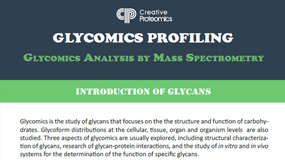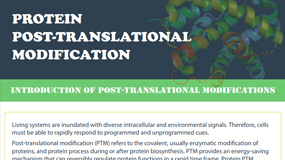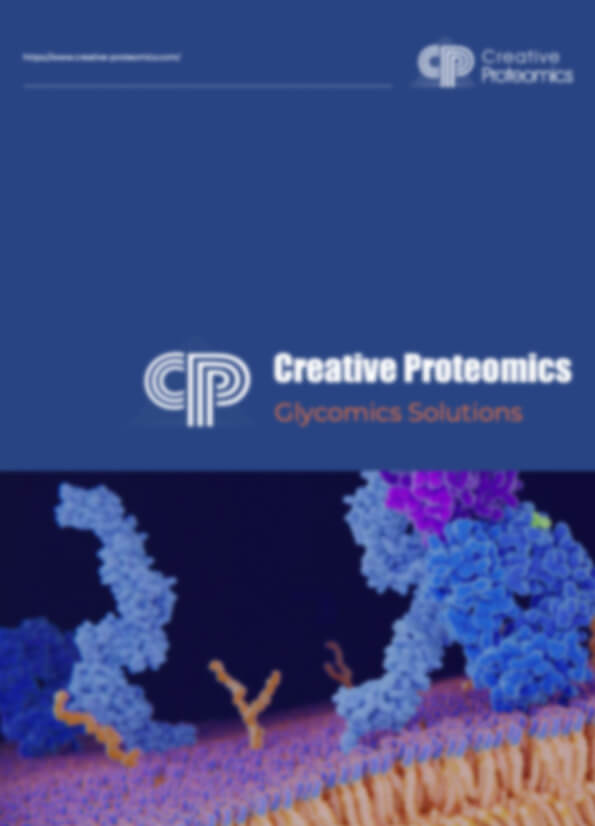Cellulose Content Analysis
Unlock precise, reproducible cellulose quantification with advanced analytical platforms such as HPLC, spectrophotometry, and NIR—tailored to support applications in biofuel production, biomaterials, and plant science.
At Creative Proteomics, we specialize in cellulose content analysis, hydrolysis profiling, and molecular weight characterization. Whether you're optimizing biomass conversion or characterizing engineered fibers, we deliver accurate data with fast turnaround.
Why Choose Us
- High-accuracy HPLC methods with RI, ELSD, or UV detection
- Full-spectrum services: hydrolysis, enzyme activity, molecular weight
- Experienced in complex matrices: wood, biomass, food, textiles
- Trusted by industrial & academic researchers worldwide
- Publication-ready reports and expert data interpretation
Submit Your Request Now
×
- Define
- What We Provide
- Sample Requirements
- Demo
- FAQs
- Publications
What is Cellulose?
Cellulose, the most abundant organic compound on Earth, is a polysaccharide made of β-D-glucose units linked by β-(1→4)-glycosidic bonds. It forms the structural backbone of plant cell walls, providing strength and rigidity. While insoluble in water and most organic solvents, cellulose can be chemically processed into derivatives like cellulose esters and oxidates, widely used in films, fibers, and other industrial materials.
In food production, cellulose is often added as dietary fiber to boost volume and fiber content without affecting taste. Its properties as a thickener, stabilizer, and anti-caking agent make it valuable in processed foods. In nature, cellulose is a major component of plant, algal, and bacterial cell walls. Although indigestible to humans, it supports gut health as dietary fiber.
Cellulose also plays a central role in renewable energy. It can be broken down into glucose and converted into ethanol for biofuel. In agriculture, its decomposition by microorganisms enriches soil and supports plant growth. These attributes make cellulose a vital material across many fields.
Why Analyze Cellulose Content?
Analyzing cellulose content is essential to understand its structural role in plants and maximize its industrial and ecological applications. In biofuel production, precise cellulose measurements optimize the conversion of biomass into glucose and ethanol, improving efficiency. In ecosystems, studying cellulose decomposition helps reveal nutrient cycling and soil health. For material science, molecular and structural analysis of cellulose supports the development of renewable and biodegradable materials. From enhancing biofuel production to advancing sustainable materials, cellulose content analysis underpins innovation and resource efficiency in multiple fields.
Creative Proteomics offer comprehensive cellulose content analysis solutions tailored to your research and industrial needs.
Methods for Cellulose Content Analysis
- High-Performance Liquid Chromatography (HPLC): This technique quantifies cellulose content by first hydrolyzing cellulose into glucose using acid or enzymes. The resulting glucose is separated using HPLC with specialized columns, such as carbohydrate or aminopropyl columns, and detected via refractive index (RI), UV, or evaporative light scattering detectors (ELSD). HPLC provides high sensitivity, precision, and reproducibility, making it ideal for plant biomass, wood, and biofuel feedstock analysis.
- Updegraff Method: This method uses a mixture of acetic acid and nitric acid to remove non-cellulosic components from the sample. The remaining cellulose is hydrolyzed with sulfuric acid, and the resulting glucose is measured. It is known for its accuracy and reproducibility, making it suitable for analyzing plant materials.
- Acid Hydrolysis Method: In this method, cellulose is hydrolyzed using concentrated sulfuric acid, breaking it down into glucose. The hydrolysate is then analyzed via gas chromatography (GC) or HPLC to quantify the glucose content. It is commonly used for analyzing tough samples like wood and bark but involves harsh chemicals and lengthy procedures.
- Anthrone Method: Cellulose is hydrolyzed into glucose, which reacts with anthrone reagent to produce a blue-green color. The intensity of this color is measured via spectrophotometry. This method is simple and fast, making it suitable for quick estimations of cellulose and reducing sugars in plant samples.
- Near-Infrared Spectroscopy (NIR): NIR measures cellulose content by analyzing the absorption of near-infrared light at characteristic wavelengths. It allows for rapid, non-destructive analysis with minimal sample preparation. This technique is particularly useful for agricultural residues and biomass samples.
HPLC remains the most precise and widely used technique due to its high accuracy, sensitivity, and ability to distinguish subtle differences between samples.
Other Cellulose Analysis
Cellulose Hydrolysis Analysis
Through acid or enzymatic catalysis, cellulose is hydrolyzed into monosaccharides such as glucose. This process is quantified using high-performance liquid chromatography (HPLC), ensuring precise measurement of hydrolysis yield and identifying by-products that may inhibit downstream applications. This service is essential for optimizing biomass conversion processes and assessing enzymatic hydrolysis efficiency.
Molecular Weight Measurement
The molecular weight of cellulose is a critical parameter for understanding its structural and functional properties. We utilize gel permeation chromatography (GPC) coupled with multi-angle light scattering (MALS) to determine molecular weight distribution with high precision. This service is particularly valuable for applications in nanocellulose development and polymer research.
Enzymatic Activity Assay
Our enzymatic activity assays measure the catalytic efficiency of cellulases, essential for studying cellulose degradation mechanisms. Using established methods such as the DNS (3,5-dinitrosalicylic acid) assay and high-throughput microplate analysis, we provide comprehensive data on enzyme kinetics. This service is critical for enzyme screening, optimization, and industrial enzyme formulations.
Sample Requirements for Cellulose Content Analysis
| Sample Type | Minimum Sample Quantity | Notes |
|---|---|---|
| Plant Biomass | ≥ 5 g | Air-dried; free of contaminants like soil or debris. |
| Processed Cellulose Fibers | ≥ 2 g | Homogenized powder or fiber form. |
| Enzyme Mixtures | ≥ 2 mL | Provide buffer composition if applicable. |
| Hydrolyzed Samples | ≥ 1 mL | Clear, filtered supernatant is preferred. |
Demo

HPLC chromatogram of cellulose decomposition products at 170 °C, with 50 mM H2SO4 at sampling time of 0, 60 and 120 min (Figure from Akin, Okan, Cellulose 23, 2016)
FAQ of Cellulose Content Analysis
What types of samples can be analyzed for cellulose content?
We can analyze a wide variety of samples for cellulose content, including plant biomass (e.g., leaves, stems, seeds), processed cellulose fibers, wood, agricultural residues, and biofuels. It's important that samples are free from contaminants such as soil, chemicals, or excessive moisture to ensure accurate results.
How do I choose the appropriate technique for cellulose content analysis?
| Technique | Suitable Sample Types | Advantages | Considerations | Best Use Case |
|---|---|---|---|---|
| High-Performance Liquid Chromatography (HPLC) | Plant biomass, wood, agricultural residues, biofuels | High accuracy, sensitivity, and reproducibility; can quantify cellulose after hydrolysis into glucose | Requires sample hydrolysis (acid or enzymatic); time-consuming | Best for precise and detailed analysis of cellulose content in complex samples |
| Updegraff Method | Plant materials, woody biomass, agricultural waste | Accurate and reproducible; effective for lignocellulosic materials | Involves chemical treatment (acetic acid and nitric acid); not suitable for all sample types | Ideal for plant biomass analysis where high precision is needed |
| Acid Hydrolysis Method | Wood, bark, and other lignocellulosic materials | Good for tough samples like wood; effective for determining glucose content | Involves harsh chemicals and lengthy procedures | Best for tough and fibrous materials requiring high cellulose extraction |
| Anthrone Method | Plant biomass, agricultural residues | Simple, fast, and cost-effective; good for rapid assessments | Less precise compared to HPLC; suitable for general estimations | Quick analysis for cellulose and reducing sugar content in plant samples |
| Near-Infrared Spectroscopy (NIR) | Agricultural residues, biomass, and processed materials | Fast, non-destructive, minimal sample preparation | Requires calibration and specific wavelength optimization | Ideal for high-throughput analysis with large sample sets in agricultural or biofuel research |
| Gas Chromatography (GC) | Samples after acid hydrolysis (e.g., plant biomass) | High sensitivity and resolution for sugar analysis | Requires pre-treatment (acid hydrolysis) and specialized equipment | Effective when analyzing sugars derived from cellulose hydrolysis |
Learn about other Q&A.
Publications
Here are some publications in Glycomics research from our clients:

- Alternative glycosylation controls endoplasmic reticulum dynamics and tubular extension in mammalian cells. 2021. https://doi.org/10.1126/sciadv.abe8349
- Conformational differences between functional human immunodeficiency virus envelope glycoprotein trimers and stabilized soluble trimers. 2019. https://doi.org/10.1128/jvi.01709-18
- Modulation of the Endomembrane System by the Anticancer Natural Product Superstolide/ZJ-101. 2023. https://doi.org/10.3390/ijms24119575
- Identification of the O-Glycan Epitope Targeted by the Anti-Human Carcinoma Monoclonal Antibody (mAb) NEO-201. 2022. https://doi.org/10.3390/cancers14204999





















